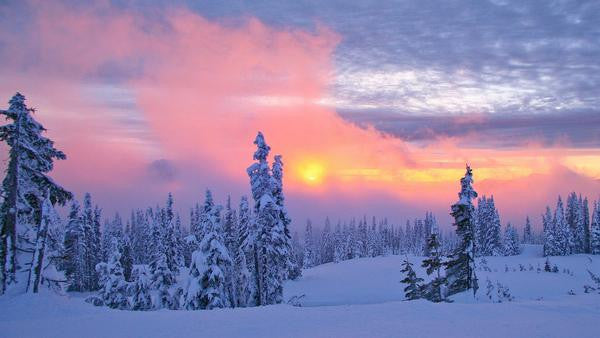The Northern Hemisphere marks the first day of winter and happens between December 21st and 23rd at which time religious holidays such as Christmas and Hanukkah are celebrated in addition to cultural celebrations of the sun returning. The first day of winter is the longest night of the year, after which point the days grow longer and the nights are shorter. Because so many cultures base celebrations and festivities around the suns' energy, we had fun researching a few lesser-known celebrations to share with you. So grab some cocoa and learn something new with us!
The Winter Solstice is when the sun is farthest away from the North Pole and is relevant in December to the Northern Hemisphere. (At the same time, it's the Summer Solstice in the Southern Hemisphere). Because of this, there are many celebrations for the start of winter and a new season.

Yule is a Pagan tradition rooted in pre-medieval Nordic times and is a festival of the sun. The Yule Log is actually an entire tree that is lit from the remains of the previous years' Yule Log, and over the twelve days of Christmas, the tree is fed into the fire to celebrate light during the coldest and darkest time of the year. Feasts, merrymaking, and sacrifices are all part of the Yule tradition.

Yalda is a Persian celebration of winter on the longest and darkest night - the Winter Solstice. Friends and family gather to eat, drink, and read poetry together. Red fruits are consumed, like Watermelons and Pomegranates, as their red color signifies the crimson glow of new life ahead of them.

Inti Raymi is Quechua for "sun festival," and was the largest gathering of the year for the Incan Empire to celebrate the return of longer days, and specifically, the sun. Sacrifices, dances, and feasts were all part of celebrating Inti Raymi and a significant part of the festival was to light a new fire and extinguish all existing flames - including kitchen fires. Even though the Incan Empire has ended, the celebrations are still continued today.

Saturnalia was an ancient Roman festival celebration that began on December 17th and was celebrated through December 23rd in honor of the Roman god, Saturn. Celebrations and sacrifices took place at The Temple of Saturn, followed by gift-exchanges, feasts, and drinking.

Dongzhi Festival is a Chinese celebration, an literally translates to, "the arrival of winter." The ancient philosophy of yin and yang play an important role in this tradition, as the beginning of longer days with more light is marked by the start of winter. Positive energy begins flowing again, and the natural balance of life takes place. Dumplings are traditionally eaten; family’s gather together, and some even make a pilgrimage to an ancient temple to worship.

St. Lucia Day is a Norse holiday that celebrates the memory of St. Lucia who was a young girl, Lucy, that used to secretly bring food to persecuted people in Rome, and would wear candles on her head so she could carry everything. Fires are burned to ward off spirits during the longest night, and children continue the tradition of dressing up in white robes with a red sash around their waist. Crowns are made from Lingonberry branches, which are evergreen, to symbolize new life in winter and ginger cookies are handed out and carols are sung!

We have just entered into winter, and many of these celebrations are currently taking place or have already happened.
How are you celebrating winter?

